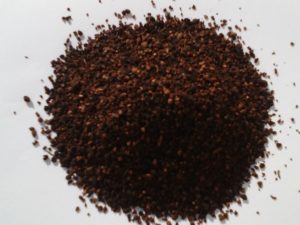Olive biomass releases considerable energy during its combustion and its calorific value largely exceeds that of other wood or agricultural biomass. Biomass fuels are probably the oldest form of energy sources where organic materials are utilized to generate power. Olive biomass is the solid residue from the production of olive oil.
Olivketts supply-
Olive pits
Solid olive residue is composed of olive pits and dried olive cake/husk.
Olive Mill Waste-OMW- for the biogas industry- Olive Mill Waste -OMW loading
Advantages of Olive Biomass
It has an ensured annual production.
It has high calorific value around 16.5-17 KJ/ Kg
It has high density, very concentrated fuel
It has proper humidity conditions around 10%
It is a carbon clean, renewable fuel source
Olive pits are separated from the vegetable parts and waste waters. The olive pits are a form of solid biomass and can be burned directly.
Olive biomass is a premium quality agricultural biomass fuel that is sourced for recycling from the olive oil industry.
The residues that remain after the virgin olive oil extraction process are called olive pomace or olive cake. (we call it regular olive biomass)
Olive pomace is a dark colored paste consisting of crushed olive pits (also called olive stones or kernels), olive husk/skin, pulp, some pomace oil and waste waters.
Usage of Olive Biomass
Dry olive residue was utilized since ancient times in the Mediterranean for cooking and heating. Direct burning is the oldest and most obvious way to obtain energy from the dry olive cake. When burned, the energy stored in the olive biomass is transformed and released as heat. The calorific value of olive pomace is quite high and comparable to that of coal. Olive biomass releases considerable energy during it’s combustion and its calorific value largely exceeds that of wood waste biomass. Olive oil mills and large industrial olive oil production facilities have been using dried and de-oiled residual solids for centuries as an alternative fuel source due to the high heating properties of the material. Exhausted olive cake is very efficient, in terms of energy, cost and environmental impact. It is more than just a valuable resource to be recovered.

Converting Olive Biomass to Bio power
Olive biomass can be used in direct combustion, CHP, co-combustion with coal and co-combustion with other biomass. It is used in coal fired power stations where part of the fossil fuel supplied to the boilers are replaced by this carbon clean alternative. Other uses are in biomass power stations where it is burned together with other biomass materials to produce electricity and useful heat. It can be used as an efficient heating fuel also in smaller, direct combustion heating system.
The emission produced when burning biomass fuel in industrial facilities is less than using fossil fuels (coal, natural gas or oil). The combustion of biomass fuel is considered carbon neutral since biomass crops, plants remove carbon dioxide from the atmosphere when they grow and store the carbon in the plant structure.

Transportation / Delivery
For direct use of olive biomass for energy production the most economical method for transporting is in bulk shipments. The usual size of a shipment varies from 3000- 5000 tones. The shipping time varies based on destination, port to port but takes about 10 to 14 days for most of Europe.
Classification biomass, agricultural biomass
Packaging bulk shipment
Density about 650 kg/m3
Available Quantity currently we are able to supply yearly about 100,000-150,000 tons of olive biomass and olive pits.
Material: dry olive pomace and olive pits.

Advantages of Olive Biomass
The olive biomass is a recycled natural waste so no trees are cut down to create our product. All raw materials are sourced from sustainable sources. Moreover olive biomass sourcing does not take up agricultural land that could be utilized for food production unlike many of the other agricultural biomass fuels. The use of olive biomass causes no net increase in the CO2 emissions to the atmosphere therefore olive biomass is a suitable alternative to fossil fuels. It is a readily available, reliable, renewable energy source with high calorific value.

